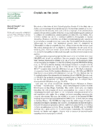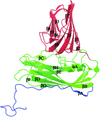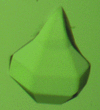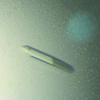issue contents
January 2008 issue

Cover illustration: A photomontage of crystal micrographs from papers published in Acta Cryst. F in 2007. Top row: putative zinc transporter CzrB from Thermus thermophilus (Höfer et al., pp. 673-677); tetrasulfocyanine, a fluorescent probe, in complex with the Fab antibody fragment MOR03268 (Hillig et al., pp. 217-223); and the homing endonuclease I-Dmo-I in complex with its target DNA (Redondo et al., pp. 1017-1020). Middle row: an Escherichia coli tRNAGly acceptor-stem microhelix (Förster et al., pp. 46-48); BigR, a transcription repressor from Xylella fastidiosa (Barbosa et al., pp. 596-598); and PH1010 from Pyrococcus horikoshii OT3 (Shirokane et al., pp. 532-534). Bottom row: the N-terminal region of the human formin-homology protein FHOD1 (Schulte et al., pp. 878-881); the archaeal transcription termination factor NusA (Tanaka et al., pp. 69-73); and Escherichia coli WrbA in complex with its cofactor flavin mononucleotide (Wolfová et al., pp. 571-575).
editorial

protein structure communications
 access
accesscrystallization communications
addenda and errata



 journal menu
journal menu




























![[publBio]](/logos/publbio.gif)






